Quote of the day: “Farming is a profession of hope” ― Brian Brett
Yesterday I got a tour of a neighbor’s farm. It is not too far distance-wise from Akiko’s (maybe about a mile) but most of that distance is up.
I grew up on a farm in Iowa. This was nothing like an Iowa farm. Hawaiian farming is totally different with the hills and rain and year-round warmth. In the next couple of weeks I hope to visit a taro farm and an orchard, just to see what they’re like.
Jim and Connie moved here from Minnesota about 6 years ago. They bought 30 acres of land and built their quonset hut home, with some of the plywood for stairs and the upper floor coming from the packing crates they used to ship their possessions to the island.
Their home is powered by a solar array on the side of the house. Their water comes from a catchment system capturing rain water from the roof of the house and directing it to a large underground tank. The water goes through two different filtration systems and then a UV filter to make it safe for drinking.
They have all the amenities one needs in their home and a sunrise view from their bedroom that is wonderful. It is far from a traditional home in looks, but functional and simple. As Connie said, “We still have a ‘normal’ house in Minnesota, but this has everything we need and we love it.”
Connie took me on a tour of their farm on their new Polaris all-terrain vehicle. It goes up and down hills, over rough terrain, and through muddy paths with no problem. I was a little nervous as Connie confidently took on bumps and muddy ground that looked almost impassable to me.
We looked at the coffee trees first. They grow two varieties of coffee. I can’t remember the name of the first variety – but it has already been picked for the year. Prime picking time for the coffee cherries is November – February. They also grow Arabica coffee and it was still fruiting and even blooming in places. Some of it has been picked and they have more to pick as the cherries ripen. (Yes, many of the locals call the coffee fruit cherries.)
The coffee fruit is sweet around the inner bean and you can squeeze out the bean and then put the skin in your mouth to savor the sweetness (spitting out the skin when you’re done). They have two stands of coffee trees that they are now harvesting and a new stand of trees that is still pretty small.
After the coffee is picked, it is put through a hand-cranked machine which separates the bean from the skin. The beans are soaked for a few days to ferment the sweet fruit that coats them, which then slips off the bean easily.
After the beans are cleaned they are spread on screens to dry. Once dry, they’re ready to roast and grind. Jim and Connie sell all the coffee they grow to a coffee shop in Hilo called Shark’s Coffee.
The cacao that they grow they have started from seed and planted 3-4 years ago. Most of the plants are still not producing fruit but it won’t be long before they reach a size and maturity where they will produce fruit. On average a mature cacao tree produces about 50 cacao pods each year.
The young trees that are grown out in the open need to be protected by a black mesh cloth. Otherwise there is a type of beetle that decimates their leaves. The cacao that was growing in the shade was actually taller than that out in the sunny field, and appeared to have no beetle problems.
The flowers are tiny and the fruits quite large (8-12 inches long and several inches in diameter). The inside of the cacao pod has many cacao seeds surrounded by a thin layer of juicy fruit. You can break a cacao pod open and eat the juicy fruit part, or you can harvest the cacao seeds and take them through a long process to produce chocolate.
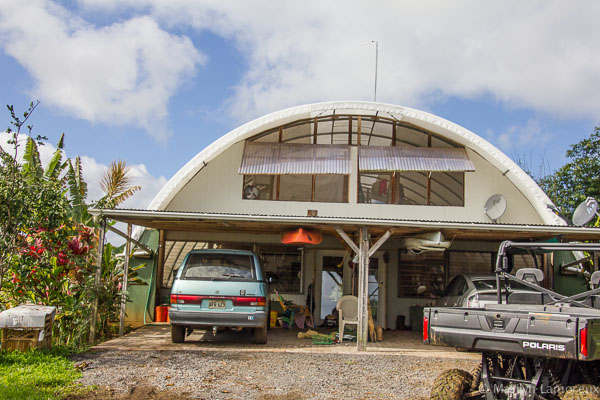
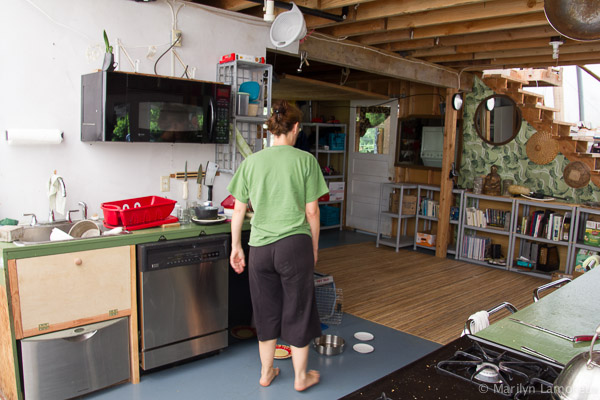

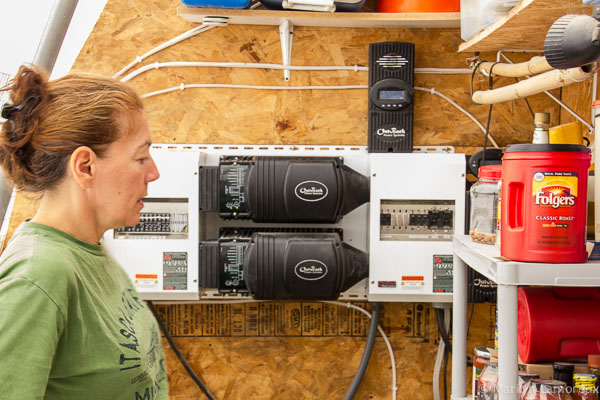
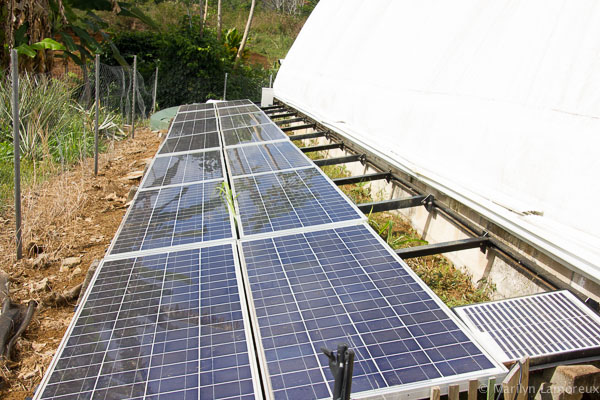
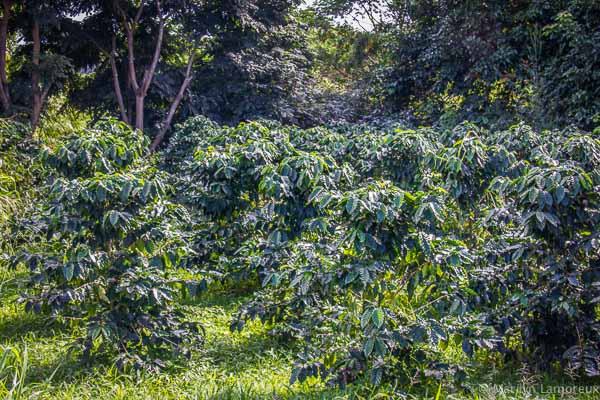
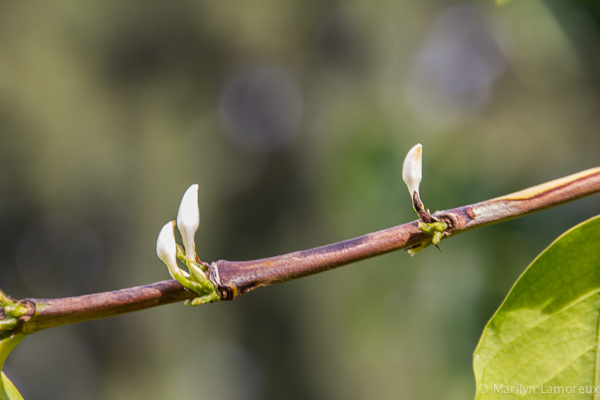
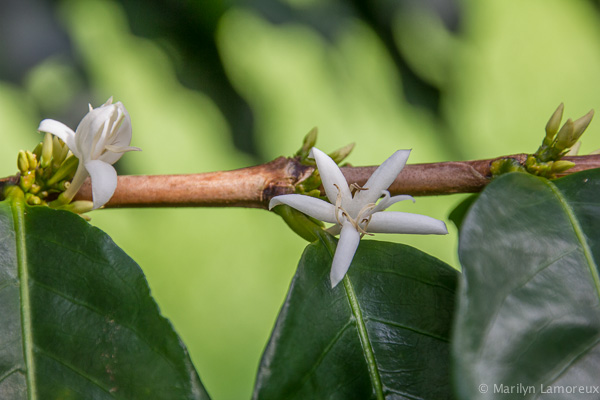

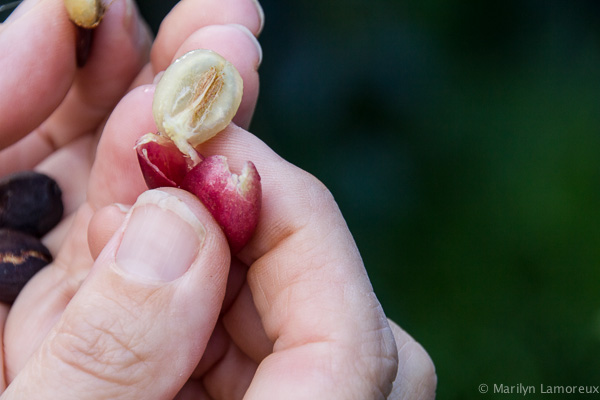
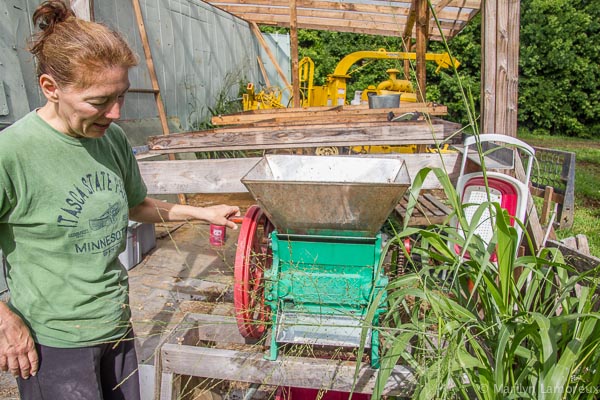
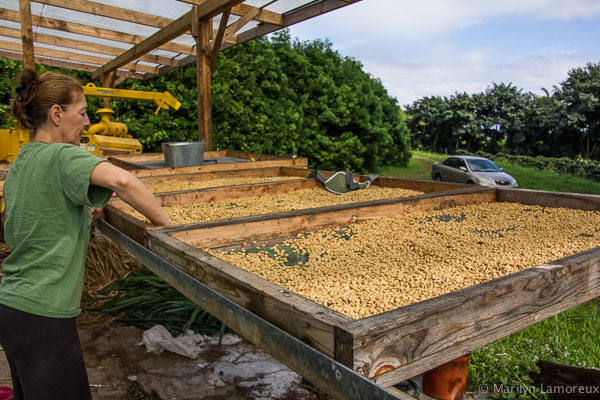
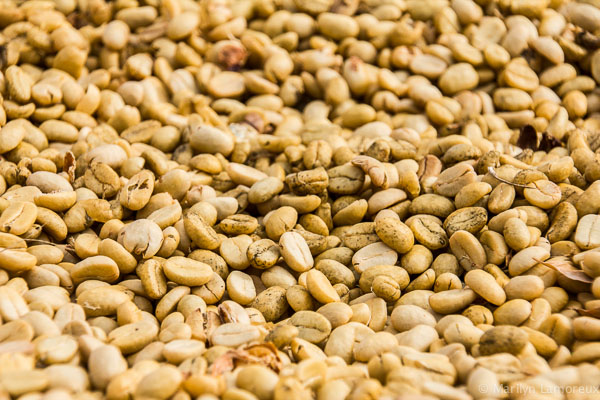
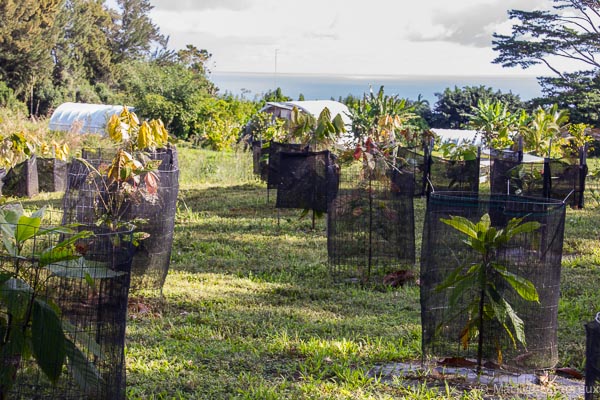
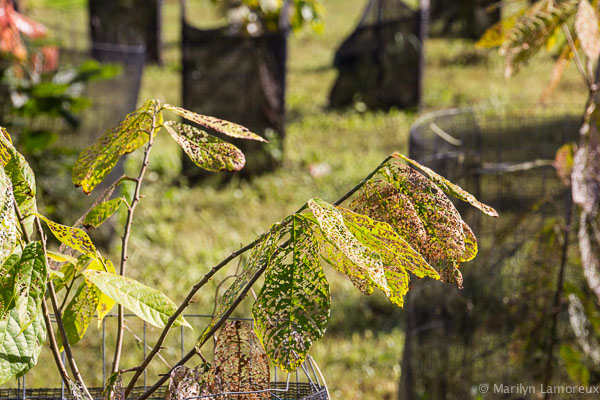
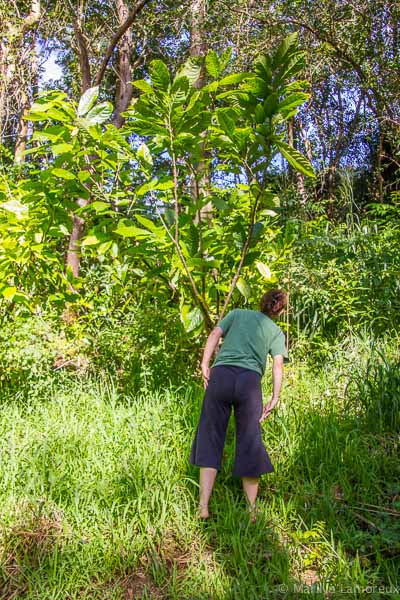
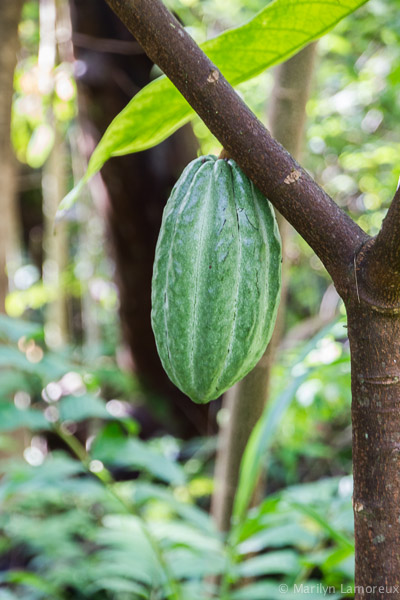
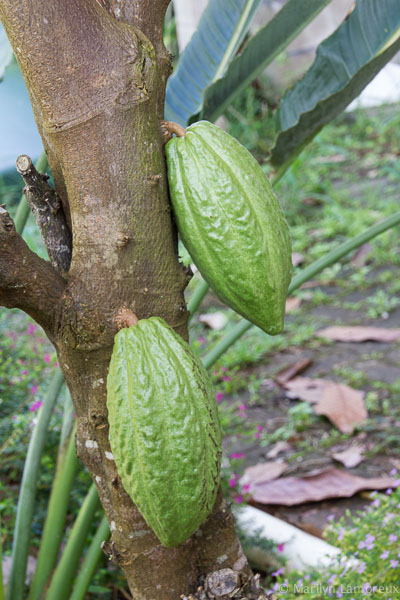
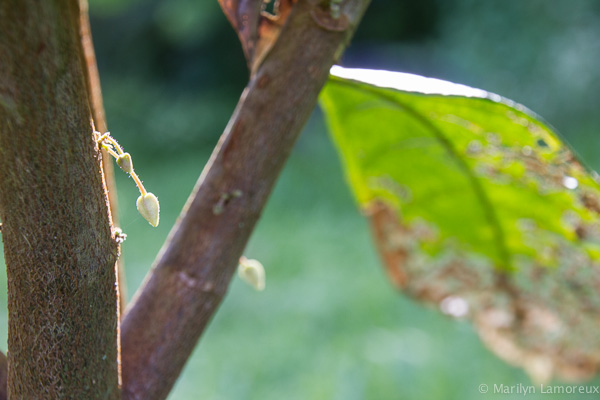

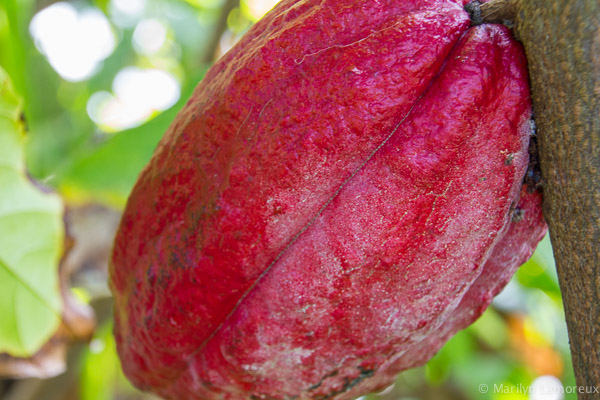

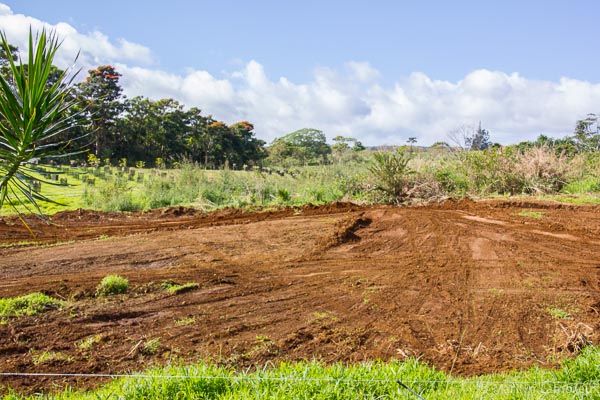
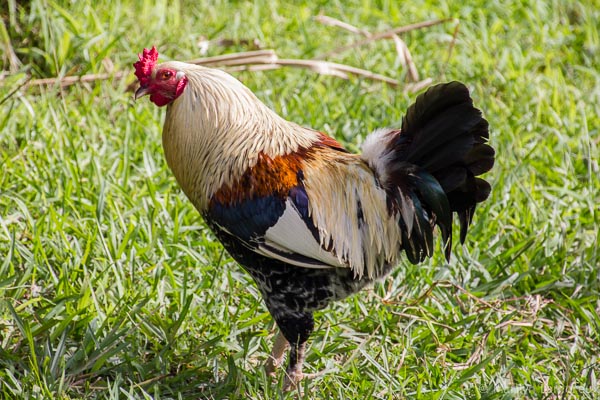

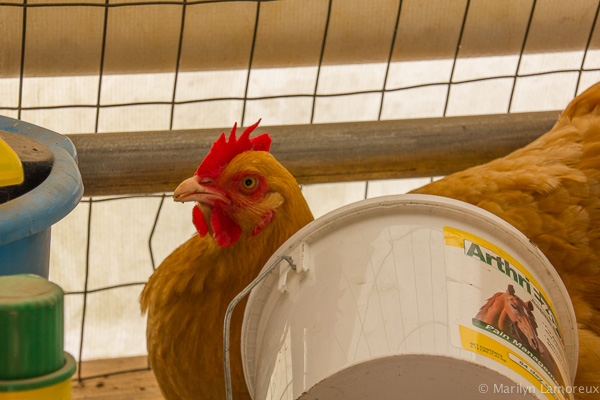
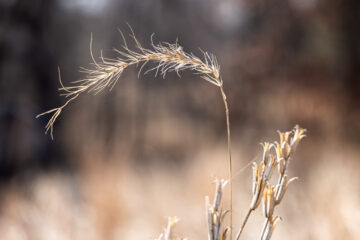
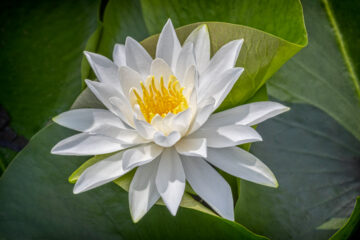

0 Comments